| SE, Inc. offers many Safety Training Courses in addition to those listed below. We have provided brief course descriptions to assist you in determining which course will satisfy your needs but please feel free to call us if you have any questions about training.
Additionally, while maintaining regulatory compliance, every course can be modified to include Client Specific policies and procedures. SE also offers many classes in Spanish!
Several of the courses offered include:
CPR/First Aid:
This course is designed to help individuals, businesses, and government agency personnel meet requirements for CPR and first aid training.
The course is a multimedia presentation utilizing videos and extensive hands-on activities
Topics and Hands-On Exercises Include:
- Initial Assessment
- Scene Assessment
- Assessing Responsiveness
- Activating EMS
- Clearing and Protecting the Airway
|
 |
- Rescue Breathing & Chest Compressions
- Chain of Survival
- Control of Bleeding
- Managing Shock
- Extensive Hands-On Workshop
|
OSHA Confined Space Procedures
In compliance with OSHA 8 CCR 5157, this course is designed to train individuals who may enter permit-required and non-permit required confined spaces.
The Procedures course is a multi-media presentation utilizing PowerPoint and videos throughout the lecture. A demonstration of the equipment and proper
work practices is also included.
Topics and Hands-On Exercises Include:
- Regulatory Requirements
- Personal Protective Equipment
- Entry Permit System
- Permit & Non-Permit Required
- Exposure Monitoring and Equipment
- Confined Space Entry Equipment
Respiratory Protection
|
 |
- Hazard Recognition & Risk Assessment
- Non-entry Rescue Procedures
- Ventilation & Adequate Illumination
- Toxicology and Confined Spaces
- Hazard Identification & Control
- Roles of Attendant, Supervisor & Entry Team
|
Respiratory Protection/Compliance:
This course is ideal for individuals, businesses, and government agency personnel that must establish and maintain a respiratory program for their employees.
Maintaining compliance with OSHA 29CFR 1910.154 and CA/OSHA 8 CCR 5144, this course will be customized to emphasize the particular respirators used at District
sites. In addition, the District�s Respiratory Program will be incorporated into the PowerPoint presentation as appropriate.
Topics Include:
- Correct Selection, Use and Maintenance
- Personal Protective Equipment
- Methods for Determining if Workers are Medically Fit to Wear a Respirator
- Evaluating the Respiratory Protection Plan to Determine its Effectiveness
- Monitoring Work Area
|
 |
- Scheduling & Conducting Inspections
- Proper Policy & Management of Fit Test Records for Each Employee
- Determining Degree of Employee Exposure
- Hazard Recognition
|
Respiratory Protection/Compliance:
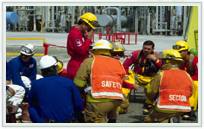 First Responder Awareness: First Responder Awareness:
This 2-Hour class is designed for individuals who, during the course of their work, may discover an uncontrolled chemical emergency release or other
hazardous materials situations. Instruction will emphasize the identification and control of a hazardous situation while initiating proper notification.
Topics Include:
- Hazardous Waste Operations Standard
- Identification of a Hazardous Situation
- Hazardous Materials & Potential Dangers
- Initiating Site Security
|
 |
- Potential Outcomes of Uncontrolled Releases
- Proper Notification Procedures
- Assessment of Dangers
- Role of First Responder
|
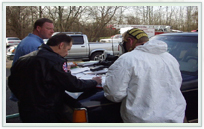 First Responder - Operations: First Responder - Operations:
This 8-Hour course is intended for individuals who respond to releases or potential releases of hazardous substances. The course identifies the roles and
responsibilities of individuals who are first to respond to an uncontrolled chemical emergency release or other hazardous materials situations. This course
can be modified to incorporate the client�s policies regarding First Responders.
Topics and Hands-On Exercises Include:
- Hazardous Waste Operations Standard
- Identification of a Hazardous Situation
- Hazardous Materials & Potential Dangers
- Initiating Site Security
|
 |
- Potential Outcomes of Uncontrolled Releases
- Proper Notification Procedures
- Assessment of Dangers
- Role of First Responder
|
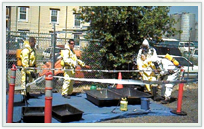 40 HR HAZWOPER � Incident Command Systems Training: 40 HR HAZWOPER � Incident Command Systems Training:
This course is designed for individuals involved with the investigation and remediation of sites suspected of containing hazardous wastes or those individuals who may respond to an uncontrolled chemical emergency release.
Our 40 Hour HAZ/MAT course is divided into several modules, each approaches a different aspect of the training program. During the last half of the final module, students will be given a one hour written exam. Following the written exam, students will take part in a "practical exam" which involves a very realistic simulated Hazardous Materials Response Incident in which students will don Level B protection. The practical portion of the exam will be videotaped. Immediately following the incident drill, students will view and critique their performance. To successfully complete the course, full attendance is mandatory and participants must score 70 percent or better on a 50-question exam at the conclusion of the course.
Topics and Hands-On Exercises Include:
- Hazardous Waste Operations Standard
- Identification & Categorization
- Basic Toxicology
- Confined Space Awareness
- Excavation Safety
- ICS/Spill Response Procedures
- Decontamination Procedures
|
 |
- Portable Monitoring Equipment
- Personal Protective Equipment
- Respiratory Protection APR/SCBA
- Fire Behavior and Control
- Site Safety Plans
- Timed SCBA Donning Drill
- Certified First Aid/CPR
|
8 HR Hazardous Waste Operations & Emergency Response Re-certification
This is the recommended annual refresher course for those who have attended the 40HR HAZWOPER training previously. This course is designed for all
personnel involved with site activities, particularly those individuals involved with the investigation and remediation of hazardous waste sites or
sites suspect of containing hazardous wastes.
Topics and Hands-On Exercises Include:
- Hazardous Waste Operations Standard
- Identification & Categorization
- Basic Toxicology
- Confined Space Awareness
- Excavation Safety
- ICS/Spill Response Procedures
- Decontamination Procedures
|
 |
- Portable Monitoring Equipment
- Personal Protective Equipment
- Respiratory Protection APR/SCBA
- Fire Behavior and Control
- Site Safety Plans
- Timed SCBA Donning Drill
- Certified First Aid/CPR
|
Asbestos Safety Courses:
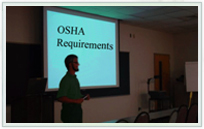
Asbestos General Awareness and Annual Refresher - OSHA Class IV
These courses are typically two to four hours in length and comply with 8 CCR 1529 and 29 CFR 1910.1101. They are designed to provide a general overview
of the hazards and health effects of asbestos exposure and can be extended to include hands-on, personal protective equipment, and respiratory protection
training. The courses are ideal for individuals who work in buildings that contain these potentially hazardous materials.
Topics Include:
- Identification and History
- Health Effects due to Occupational Exposure
- Correlation Between Smoking & Asbestos
- Activities that May Cause Asbestos Fibers to Become Airborne
|
 |
- Friable VS Non-Friable
- OSHA Exposure Limits
- Regulation Overview
- Personal Protective Equipment
|
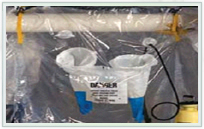 Asbestos Operations & Maintenance - OSHA Class III Asbestos Operations & Maintenance - OSHA Class III
AHERA requires training for all members of the maintenance or custodial staff in schools and/or commercial/public/private buildings that contain asbestos.
The Occupational Safety and Health Administration (OSHA) and CA/OSHA also require training for employees who disturb asbestos during maintenance or custodial
activities.
Topics and Hands-On Exercises Include:
- Identification and History
- Contamination Prevention & Control Methods
- Regulation Overview
- Asbestos Waste Disposal
|
 |
- Work Practices and Procedures
- Health Effects due to Occupational Exposure
- Personal Protective Equipment
- Extensive Hands-On Workshop
|
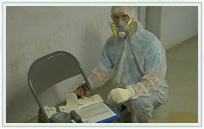 4-Hour Annual Asbestos Operations & Maintenance Refresher: 4-Hour Annual Asbestos Operations & Maintenance Refresher:
This is a course for individuals who have attended the 16-Hour Operations & Maintenance Initial course and fully complies with 8 CCR 1529 CA/OSHA standard.
Topics and Hands-On Exercises Include:
- Review of the Important Elements Covered by the Initial Course
- Health Effects due to Occupational Exposure
- Asbestos Waste Disposal
|
 |
- Latest Developments in State of the Art Work Practices
- Changes in Federal and State Regulations
- Hands-On Workshop
|
CA/OSHA & AHERA � Contractor/Supervisor Asbestos Abatement:
Asbestos Contractor/Supervisor Annual Refresher:
This course is intended for persons who have previously taken the Contractor/Supervisor Initial Asbestos Abatement course. It is important to be aware that
annual refresher training must be completed within one year of the expiration date of your original certificate. During the time your certificate is expired,
you will be unable to supervise and/or conduct asbestos abatement activities. This course is approved by CA/OSHA for AHERA Compliance
Topics Include:
- Federal and State Regulatory Update
- Abatement Techniques and Equipment Update
- Legal, Insurance and Bonding Updates
|
 |
- Respiratory Protection Update
- Revised Air Monitoring Techniques and Requirements
- Summaries of State's Certification and Licensing Requirements
|
CA/OSHA & AHERA � Worker Asbestos Abatement:
Asbestos Worker Annual Refresher:
This course is intended for persons who have previously taken the Worker Initial Asbestos Abatement course. It is important to be aware that annual
refresher training must be completed within one year of the expiration date of your original certificate. During the time your certificate is expired,
you will be unable to supervise and/or conduct asbestos abatement activities. This course is approved by CA/OSHA for AHERA Compliance
Topics Include:
- Federal and State Regulatory Update
- Abatement Techniques and Equipment Update
- Legal, Insurance and Bonding Updates
|
 |
- Respiratory Protection Update
- Revised Air Monitoring Techniques and Requirements
- Summaries of State's Certification and Licensing Requirements
|
LEAD Safety Courses
OSHA Lead In Construction:
This initial training course is designed to train individuals who disturb lead-based paint during typical construction, demolition, and painting activities. The course is in compliance with CA/OSHA Lead in Construction Standard Title 8 CCR 1532.1.
Topics and Hands-On Exercises Include:
- History and Use of Lead
- Lead Exposure
- Choosing Appropriate Abatement Strategies
- Personal Protective Equipment
|
 |
- Best Work Practices and Procedures
- Laws & Regulations
- Health Effects due to Occupational Exposure
- Hands-On Workshop
|
OSHA Lead In Construction Refresher:
OSHA Lead In Construction:
This initial training course is designed to train individuals who disturb lead-based paint during typical construction, demolition, and painting activities. The course is in compliance with CA/OSHA Lead in Construction Standard Title 8 CCR 1532.1.
Topics and Hands-On Exercises Include:
- Review Key Aspects of Initial Course
- Abatement Techniques and Equipment Update
- Federal and State Regulatory Update
|
 |
- Respiratory Protection Update
- Health Effects due to Occupational Exposure
- Revised Air Monitoring Techniques and Requirements
|
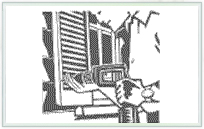
EPA Renovation, Repair and Painting Course - Initial and Refresher (Spanish & English).
A Federal regulation called the Renovation, Repair, and Painting Rule (RRP) went into effect on April 22, 2010.� It requires renovation and painting contractors
and other trades who work in pre-1978 housing and who might disturb painted surfaces to become Lead Certified Renovators by�taking a one-day
course about using "Lead Safe Work Practices" on the job. Info for the RRP course
- Why is the RRP Rule important?
- To Whom does the RRP Rule apply?
- Where does the RRP Rule apply?
- What does the RRP Rule require?
- What do Contractors need to do?
- What Training is required?
- Frequently Asked Questions (FAQs)
Introduction
A Federal regulation called the Renovation, Repair, and Painting Rule (RRP) went into effect on April 22, 2010.�It requires renovation and painting
contractors and other trades who work in pre-1978 housing and who might disturb painted surfaces to become Lead Certified Renovators by�taking a one-day
course about using "Lead Safe Work Practices" on the job.
A summary of the Rule - with California-related Notes - follows:
 Why is the RRP Rule important?� Why is the RRP Rule important?�
When lead paint is sanded or scraped or disturbed,�microscopic particles of the metal mingle with the dust that is created.�That "lead-containing" dust is what
can seriously impact people's health, especially children and pregnant women.
Lead causes a long list of problems, including learning and behavioral problems, kidney disease, high blood pressure, miscarriage and birth defects.�Lead can even
cause depression and aggressive behavior.�The problems caused by lead, even very tiny amounts of it, would fill an encyclopedia.� Lead doubles the number of
children in special education classes and is thought to play a major role in our crime rate.�There is no safe level of lead in the body.�Any is bad for you.
There has been a lot of publicity about toys and other consumer products containing lead.� But, problems caused by all of those products put together is a drop
in the bucket compared to the number of people harmed when contractors disturb old paint in pre-1978 buildings without taking some simple precautions.
That's why EPA and the State of California require contractors to protect the people they work for.
NOTE: The California regulation is already in effect.�The Federal EPA's Renovation, Repair and Painting Rule (or RRP) went into effect on
April 22, 2010.
To Whom does the RRP Rule apply?
The rule applies to all jobs in pre-1978 housing (i.e. "Target Housing") and child occupied facilities where more than 6 square feet�per room or 20 square feet
outside will be "disturbed" by worker(s) being compensated for the job.
The RRP rule covers a lot of jobs: renovation, remodeling, painting, window replacement, plumbing, electrical work, heating & air-conditioning,�demolition, plus
work performed by trades like carpenters, electricians and handymen.� The rule applies to persons working for rental property owners, schools, and day care
providers too.�It also applies to non-profits and governmental agencies.
Where does the RRP Rule apply?
The rule applies in Target Housing and Child-Occupied Facilities.
Target Housing - is a house or apartment (including mobile homes) built before January 1, 1978 except for:�
1)�0-bedroom units (like dorm rooms or studio apartments)
2)�housing that is officially designated for the elderly or the handicapped
3) housing that has been tested by a State Certified Lead Inspector and found to be free of lead-based paint.
Child-Occupied Facility - is a building, or portion of a building, constructed prior to 1978, visited by the same child, 6 years of age or under, on at least 2
different days within any week, provided that each day's visit lasts at least 3 hours, the combined weekly visit lasts at least 6 hours, and the combined annual
visits last at least 60 hours. Such facilities may include, but are not limited to, day-care centers, preschools and kindergarten classrooms.
NOTE: On August 26, 2009, EPA announced it plans to, "expand lead safe work practices and other protective requirements for ... work involving lead paint to most
buildings, including public and commercial structures, built before 1978."
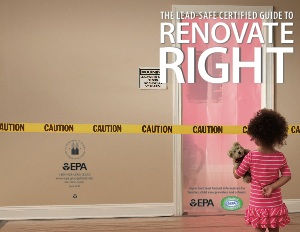 What does the RRP Rule require? What does the RRP Rule require?
1. Pamphlet Distribution - Contractors must give clients a pamphlet called "Renovate Right" and get a signed receipt before beginning a job.� NOTE: This is already in effect!
Contractors can call (800) 424-5323 and ask for free copies of "Renovate Right" and the "Small Entity Compliance Guide to Renovate Right" or both pamphlets can
be downloaded as PDF files from the EPA website. Very Important!, a sample of the form (Pre-Renovation Disclosure Form) to be signed by the owner or tenant confirming that they received a copy of the lead pamphlet before renovations begin.
2.�Individual Certification - At least one RRP Certified Renovator is required at each job site.�Certification involves taking a 1-day class from an EPA
Accredited Training Provider.�For class availability visit: RRP Training
Note:�State Certified Lead Abatement Supervisors and Workers must also become RRP certified, but they only need to take a 1/2 day "refresher" class. For RRP
Refresher availability visit: RRP Refresh
3.�Firm Certification (click for on-line application)- In addition to individual certification, each firm, agency or non-profit must also become RRP certified.�(Note: This includes city
agencies and school districts as well as small "one-man-band" handymen and owners of rental property.) Firms or "entities" must submit an application and pay EPA
a fee ($300) which is good for 5 years.
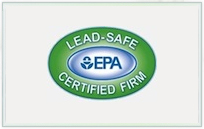 The EPA Firm Certification Form can be downloaded from the EPA web site. Be sure to download the Example as well. You do not need individual certification to
submit a Firm Application. Firms should apply as soon as possible. According to the EPA, after April 22, 2010, "... no firm working in target housing or
child-occupied facilities, where lead-based paint will be affected by the work, may perform, offer or claim to perform renovations without EPA Firm Certification." Firm certification is not the same as the personal (or individual) certification attained by successful completion of an RRP course. There is no training The EPA Firm Certification Form can be downloaded from the EPA web site. Be sure to download the Example as well. You do not need individual certification to
submit a Firm Application. Firms should apply as soon as possible. According to the EPA, after April 22, 2010, "... no firm working in target housing or
child-occupied facilities, where lead-based paint will be affected by the work, may perform, offer or claim to perform renovations without EPA Firm Certification." Firm certification is not the same as the personal (or individual) certification attained by successful completion of an RRP course. There is no training
Note:�Lead Abatement firms must also become RRP Certified if they do non-abatement jobs.
4.�On-the-Job-Training - RRP Certified Renovators are required to train all non-certified people at the job site. NOTE: Contractors who do business with agencies receiving Federal money for housing rehabilitation, etc must have everyone trained in the classroom.
5.�Paint Testing - The rule requires contractors to either test paint they will disturb BEFORE beginning a job, or assume that it is lead-based.�This testing
is to be done by the contractor, using EPA-approved test kits.
Note: However, in California contractors may not test paint.�Instead, current law requires that they must assume that all surfaces in all structures built before
1978 contain lead-based paint. The only people who can test for lead-based paint in California are State Certified Lead Inspectors/Risk Assessors.
6.�Use Lead Safe Work Practices - The RRP Rule requires that "Lead Safe Work Practices" be used when disturbing 6 sq feet per room or 20 sq feet outside. NOTE: California already requires that "Lead Safe Work Practices" be used in all pre-1978 structures when disturbing any amount of known or "presumed" lead-based
aint.
"Lead Safe Work Practices" aren't difficult or costly. Buying a good HEPA vacuum is probably the biggest expense.�Shop vacs with HEPA attachments are not allowed.
Certified HEPA vacuums are the only type of vacuum permitted under the RRP Rule.
7.�Cleaning Verification - At the end of each job, contractors are required to do a "cleaning verification" to make sure they cleaned up properly.� They wipe
a cleaned area with a white cloth and then compare the cloth against a picture on a laminated card given to them during training.� If the cloth is lighter than
the picture on the card, the area is considered to be clean.
NOTE: This is the most controversial part of the regulation.�Standard procedure after most lead jobs is to hire a 3rd-party State-Certified Lead Inspector to
take (clearance) dust samples for laboratory evaluation to confirm that no lead hazards remain.
Last August, EPA announced that it intends to expand protective requirements of the RRP Rule, "to require renovation firms to perform quantitative dust testing to
achieve dust-lead levels that comply with EPA's regulatory standards." We think that means Clearances may be required in some - not all - instances.
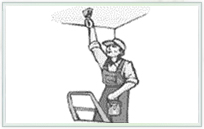 What do Contractors Need to Do? What do Contractors Need to Do?
1.� Sign up for an EPA Accredited RRP Class at (866) 611-9841.
NOTE: Lead Abatement Workers & Supervisors already state certified should sign up for a 4-hr RRP Refresher.
2.� Obtain free copies of "Renovate Right" and the "Small Entity Compliance Guide to Renovate Right" by calling 800-424-5323 or,
download them from the EPA Publications page.
3.� Purchase a good quality HEPA vacuum (if you don't already own one).�They are available from most Remediation or Environmental Equipment suppliers.
4. For more about the RRP Rule visit the: EPA RRP Web Page.
Frequently Asked Questions
These are questions we asked our EPA contacts and the answers we received.
NOTE: For additional RRP-related FAQs visit the EPA FAQ Pages.
Q: Are public schools subject to the RRP rule?
A: Yes, RR&P applies to all schools public, private and alternative.
Q: If I have three apartment buildings - each it's own LLC - and I work on each of them as owner, do I need three firm certs?
A: Only one firm certification and only one project overseer needs to have the eight hours of training for the apartment maintenance unit regardless of the number apartments handled.
Q: While the rule specifically mentions "surface coatings" such as paint, varnish or shellac, it does not mention stain. Are stained surfaces subject to the RRP Rule?
A: Yes, comes under coatings.
Q: Do workers need to be trained in a task - say wet sanding - at every job, or once trained are they considered trained for all successive jobs?
A: On-the-job training is required at every job except when you can document that a worker has been previously trained.
Q: If I am a handyman working alone do I need a Firm certification?
A: Yes, to work on pre-78 structures, you will need both the individual and the firm certifications.
Q: I live in one unit of a duplex I own and rent the other. Do I need RRP certification?
A: Yes, if you do maintenance or repair work on the rental unit. You will need both the firm and individual certifications. By the way, rent is considered
compensation under the rule.

|
 |
